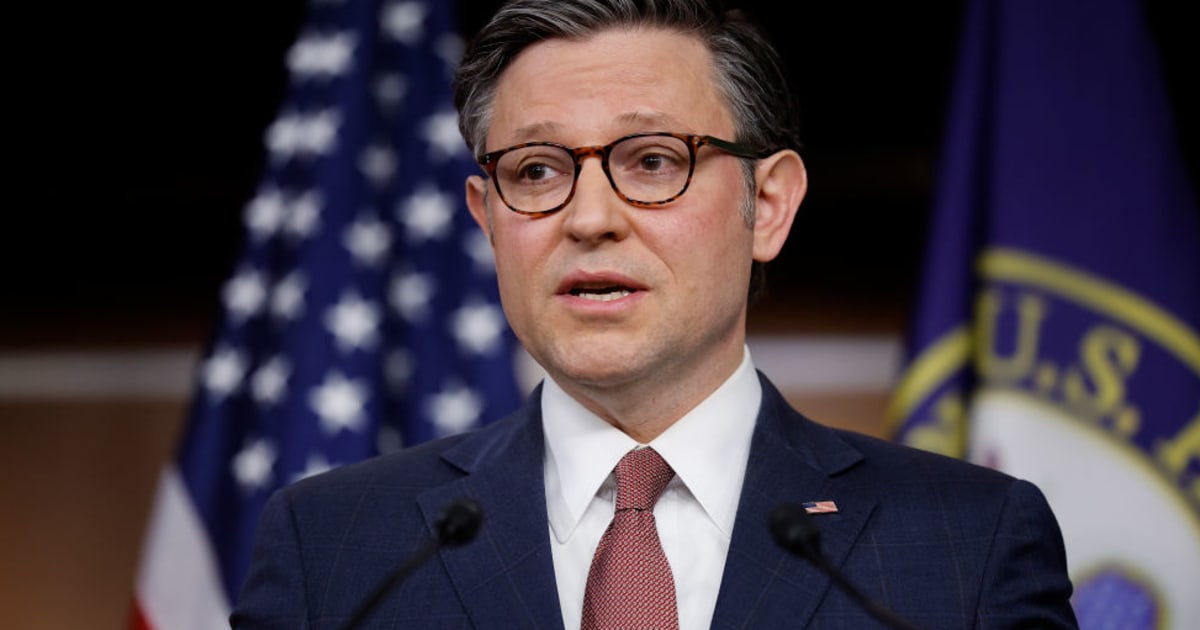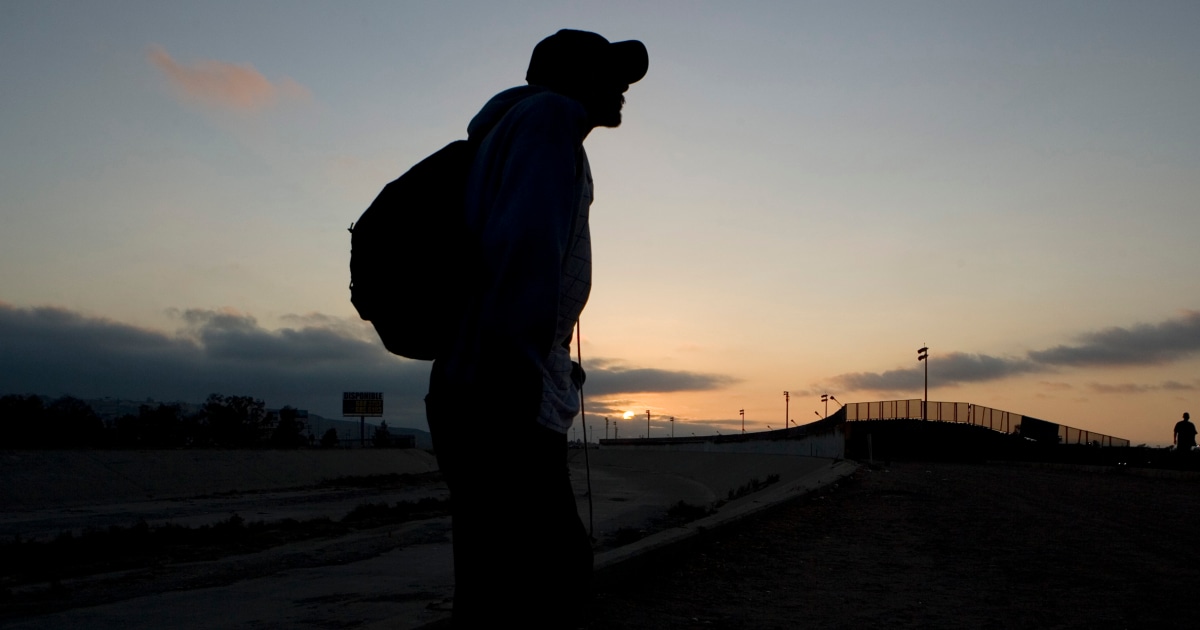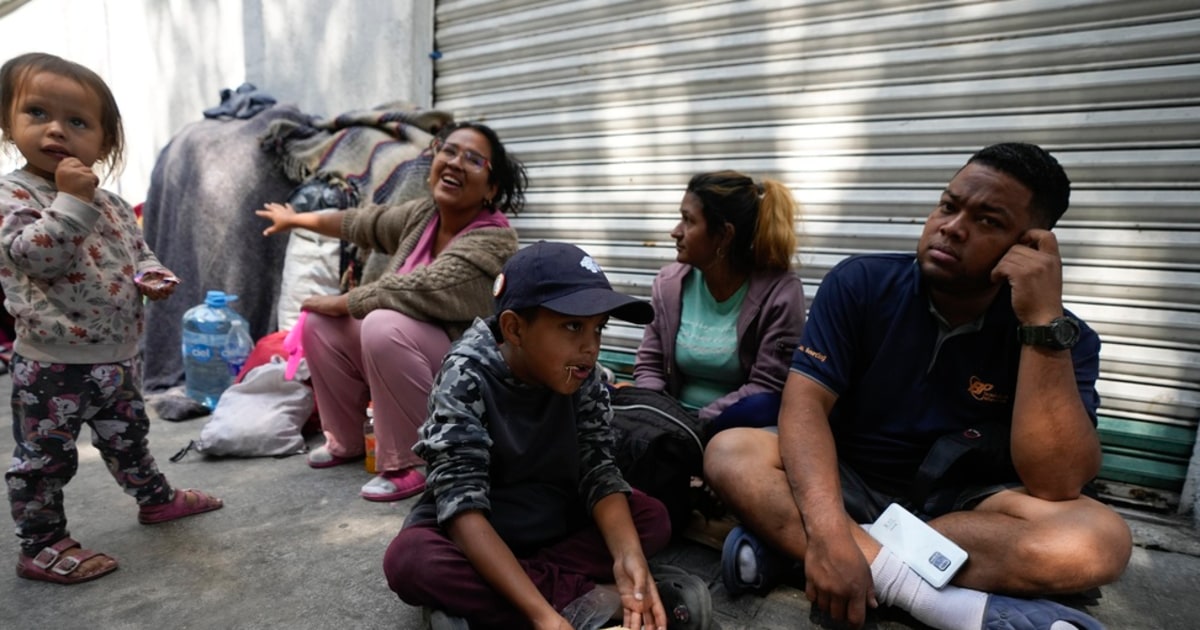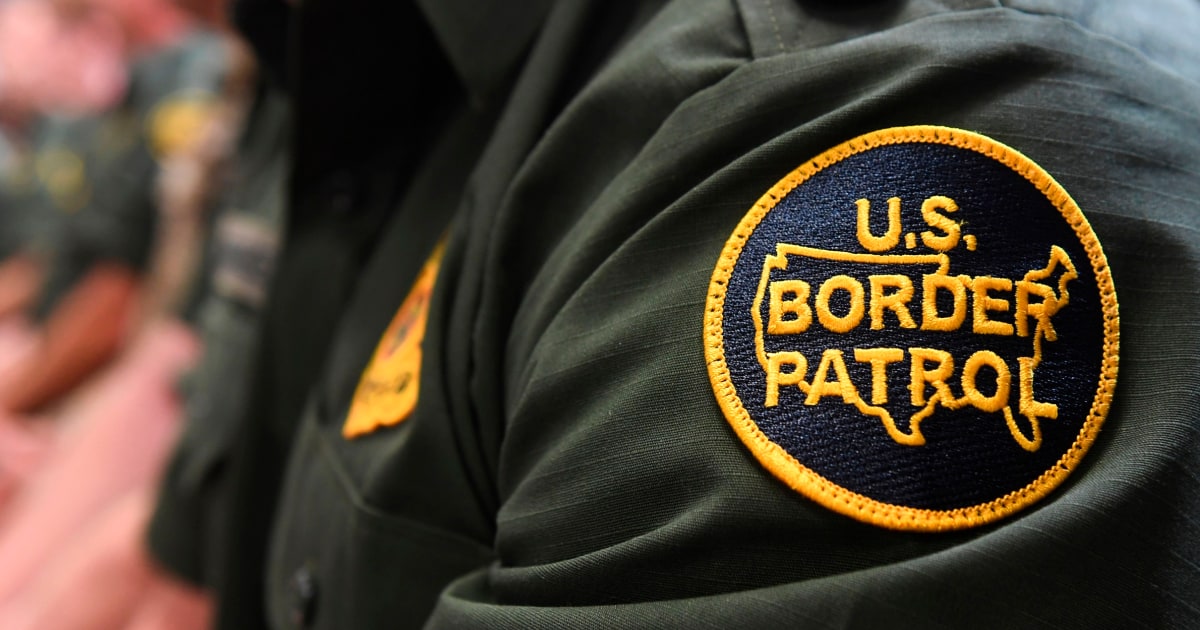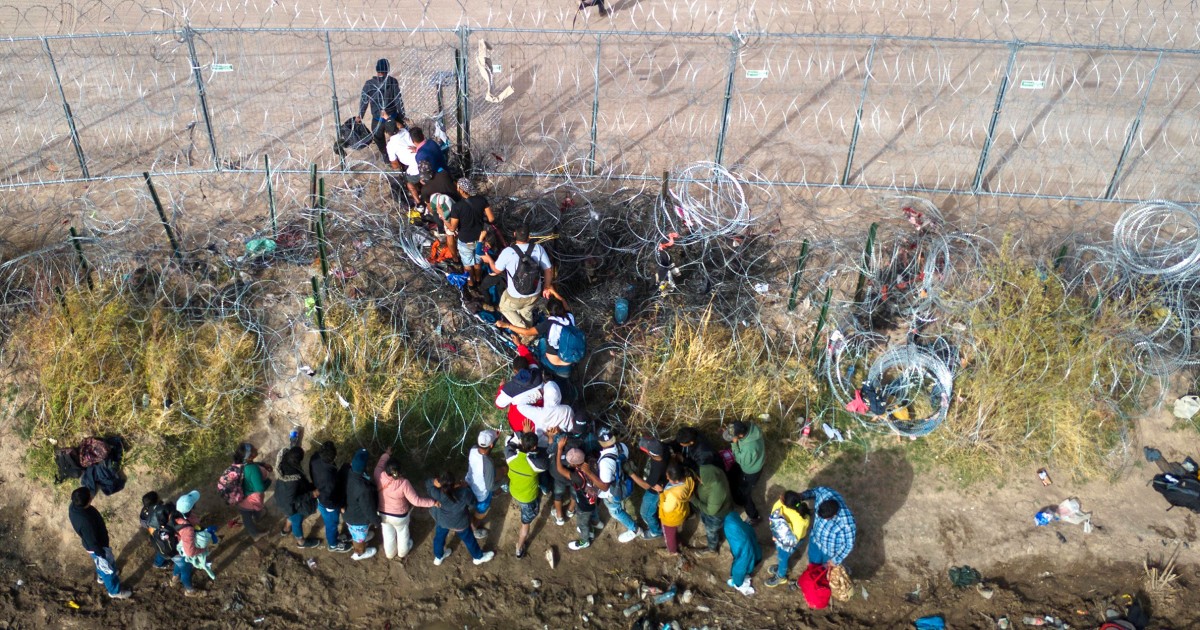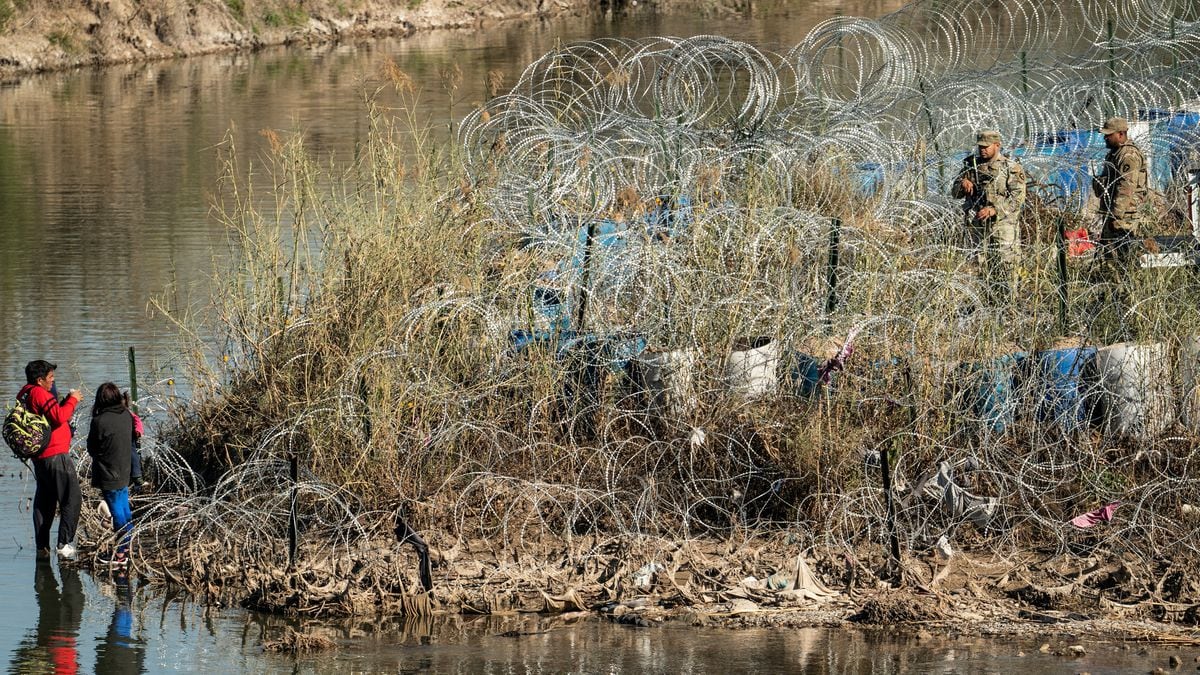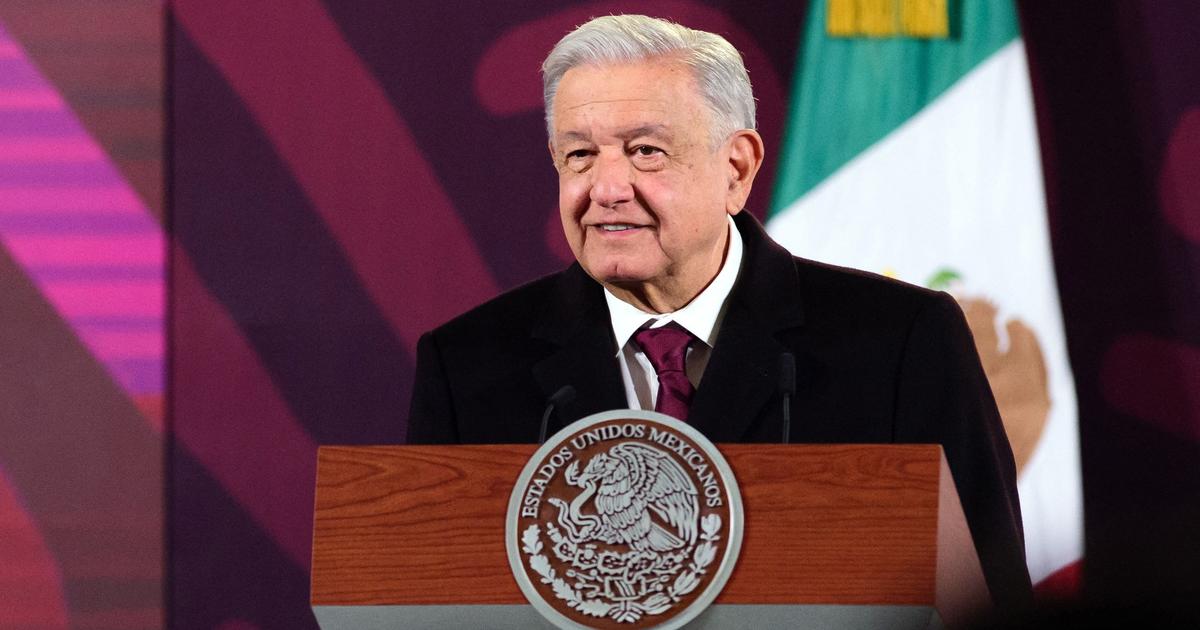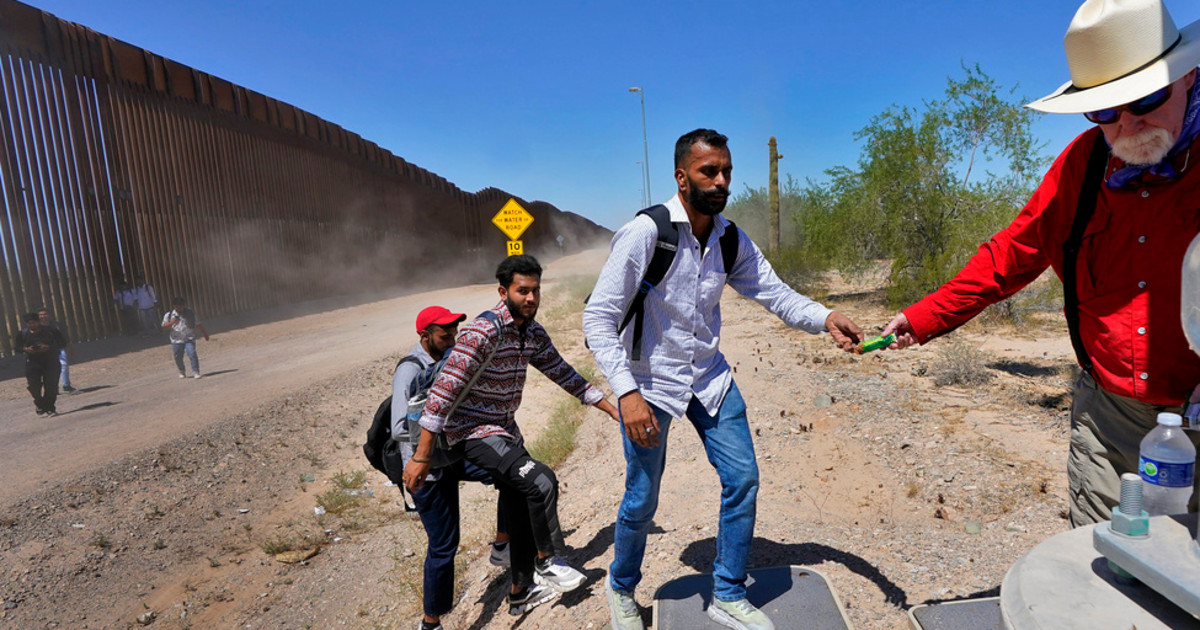1Lucía, a young mother from the Mexican state of Guerrero, walks with her young daughter through a makeshift migrant camp in Matamoros, in the state of Tamaulipas, northern Mexico. Hector Guerrero 2Nuhum Euceda is a Salvadoran who arrived seven months ago in Matamoros, in Tamaulipas, with his family. The man lost his job as a loader in a packinghouse due to the covid-19 emergency and decided to migrate. Hector Guerrero 3Despite the lack of basic services such as water and electricity, the families that make up this settlement on the border do not want to leave the place. Being a few feet from American land gives them a false sense of security and tranquility. His ultimate goal, which is to cross into the US, seems closer from there. Hector Guerrero 4The camp is mainly made up of entire families. It is rare to see men or women unaccompanied. Most of the people who made the trip alone were able to cross or were repatriated to their countries of origin. Hector Guerrero 5 José Luis Guerra is Cuban. He made a long journey through seven countries until he reached Tamaulipas, in Mexico. At the camp, he met Gabriela Vera, a Bolivian woman who left her town shortly before the turbulent political situation in the Andean country broke out late last year. The two fell in love and now share a small tent while waiting for responses to their asylum claims in the United States. Hector Guerrero 6A group of Mexicans deported from detention jails in the United States travel in a migration van that will take them to the bus back to Mexico City. From there, they will have to find ways to return to their home villages. Hector Guerrero 7After the health emergency in the United States worsened, President Donald Trump streamlined the deportation process. In the image, a group of Mexican deportees waits under the Reynosa border bridge in Tamaulipas. Hector Guerrero 8A group of young people detained at the border are waiting to be interviewed at the Reynosa immigration point, on the Texas border. Hector Guerrero 9Sitting and with his face covered in a mask, a man who was detained while trying to cross the border listens to his rights at a migration center in Tamaulipas. Hector Guerrero 10Volunteers deliver food from a vehicle to migrants and deportees who remain stranded outside a shelter on the border. In the face of the coronavirus emergency, many of these shelters have had to be closed and quarantined. Hector Guerrero 11 Throughout the border route on the Mexico side there are sanitary checkpoints in which agents measure the temperature of drivers. The measures are increased in the limits between the Mexican States. Hector Guerrero 12The route that runs along the route between the States of Coahuila and Chihuahua, covered with mist. Hector Guerrero 13 Medical personnel take the temperature of a patient at an emergency checkpoint installed in Nuevo Laredo, Tamaulipas. Hector Guerrero 14Families of patients with covid-19 await news about the state of their relatives at the gates of the General Hospital of Ciudad Juárez. Hector Guerrero 15The hours of waiting on the sidewalks of hospitals become endless for the relatives of those admitted. In the image, a group of religious volunteers goes to the Ciudad Juárez regional hospital to offer a prayer. Hector Guerrero 16Workers from different maquiladoras in northern Mexico carry out a strike to demand the immediate closure of these companies to prevent the virus from spreading. Hector Guerrero 17Maquiladora employees demand to receive the full salary for the duration of the confinement measures and denounce the lack of protection in the workplace. As of April 20, when this photograph was taken, more than four maquila workers had died. Hector Guerrero 18In the municipality of Caborca, in the State of Sonora, a curfew has been imposed between six in the afternoon and six in the morning. In the image, a local police officer stands guard on one of the avenues of the small town. Hector Guerrero 19Volunteer staff take advantage of the curfew to wash the busiest points of the city of Caborca, in northwestern Mexico, with soap and water. Hector Guerrero 20The rocky mountains of La Rumorosa announce the arrival by road to Tijuana. Hector Guerrero 21The San Ysidro sentry box, the border point that has been repeatedly designated as one of the places with the highest human trafficking in the world, looks completely desolate. Traffic in that area has decreased by 70%. Hector Guerrero 22The body of an unidentified woman lies on the sidewalk of a street in the heart of Tijuana. The body remained in the place for more than 12 hours without being removed by the authorities, due to the work overload of the forensic services in the entity. Hector Guerrero 23A paramedic transfers a critically ill covid-19 patient in Tijuana. That city has one of the highest rates of contagion and mortality from coronavirus in Mexico, just below the capital. Hector Guerrero 24Families of people infected with covid-19 come to receive news at the gates of General Hospital No. 1 in Tijuana. This hospital concentrates the largest number of cases in the State of Baja California. Hector Guerrero 25 Forensic medical service personnel work in a bodyguard area. Despite the fact that these workers should not attend cases of covid-19, they have received bodies of people who died with this virus. Hector Guerrero 26Workers in a municipal pantheon dig more graves in a new area of the cemetery to receive the dead of the epidemic. Hector Guerrero 27A musician from the pantheon awaits a funeral. Most people killed by covid-19 are buried within 11 minutes and family members are not allowed to do the traditional Mexican ritual of music and praise. Hector Guerrero 28Sulturers bury the corpse of a covid-19 victim. In addition to throwing chlorine water into the coffin, they use tapes to avoid touching it. Hector Guerrero 29The relatives of the deceased by covid-19, observe the burial in the Tijuana cemetery without being able to approach the coffin. Hector Guerrero 30Cemetery workers allow the victim's next of kin to pass so that they can leave their wreaths only after the coffin remains underground. Hector Guerrero
The border of Mexico and the United States against the coronavirus, in images
2020-05-04T22:53:39.419Z
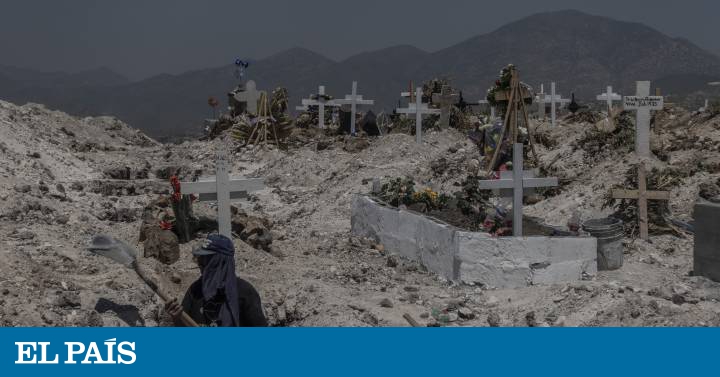
The crisis unleashed by covid-19 has hit those who live and transit between the two countries hard. This visual chronicle covers, from Matamoros to Tijuana, the stories of those who survive the emergency there

